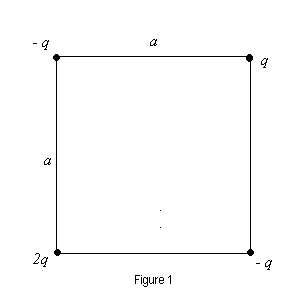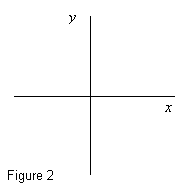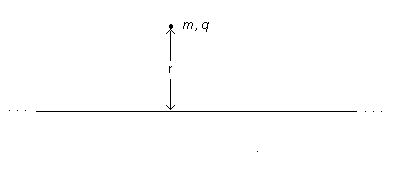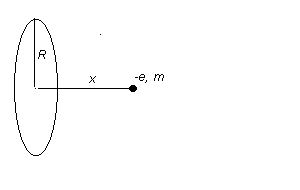
|
From Autumn 2000 |
|
| Test 2 Autumn 2001 | |
1. (20 points) A 1.50-kg iron (FE) horseshoe initially at exactly 600oC is dropped into a bucket containing 20.0 kg of water (w) . The bucket is made of aluminum (al) and has mass 3.00 kg. The water and bucket are initially at 25.0 oC. Assume no heat is lost to the surroundings as the system comes to its equilibrium temperature Tf .
(a) (17 points) What is the total entropy change of the system (horseshoe + bucket + water) after the system comes to equilibrium? Use Cw = 4186 J/kg oC, CFE = 448 J/kgoC and Cal = 900 J/kgoC
(b) (3 points) Is the process irreversible? Prove your answer.
| Solution Outline: See Test 1, problem
4. Same
numbers!! Way to go Nick! (a)Mw*Cw(Tf -25) + Mal*Cal*(Tf - 25) = MFE*CFE*(600 - Tf). Solve for Tf = 29.4 degrees. Remember that? Next calculate the entropy change for each element of the system and add them up: Mw*Cw*ln(302.4/298) +Mal*Cal*ln(302.4/298) + MFE*CFE*ln(302.4/873) = 554 J/K (b) Irreversible because delta S > 0 for this isolated system. See
solution to sample test 1, problem 4, which stated: "See page 632. If the process is irreversible, the entropy of an isolated system always increases. |
2. ( 20 points)4B
SP12 REFERENCE: FORCE AND FIELD FROM A DISCREET SET OF POINT
CHARGERS:
QUIZ 1 #47, #76
(a) (12 points) What is the direction of the net force on the charge in the upper right corner of the square of side a shown in figure 1 below ? Give an angle and show the angle and direction of the force by drawing an arrow in the correct quadrant on the axes shown in figure 2. Prove your answer. Show all steps!
(b) (8 points) What is the magnitude (in Newtons) of the net force on the charge in the upper right corner of the square shown in figure 1 below ? Assume that q = 1nC = 1x10-9 C and a = 0.10 m.


| Solution Outline:
See Quiz for Ch. 23!! You had a least two problems dealing with squares or
rectangles!! (a) Fx = k(2q2/2a2) cos45 - k(q2/a2) < 0 and Fy = k(2q2/2a2)sin45 - k(q2/a2) < 0. Thus, the net vector points in the third quadrant since both components of the net force are negative. And since | Fy | = | Fx |, the reference angle is 45 degrees in the third quad. (b) F2 = Fx2 + Fy2 = 2Fy2. Thus, F = 1.41Fy, where Fy is given in part (a). |
3. 4B SP12 REFERENCE: FORCE
AND FIELD FROM A LINE OF CHARGE, BALANCING GRAVITY:
QUIZ 1 #82; QUIZ 2 #4, #38
A infinitely long wire has positive linear charge density ![]() and lies in a horizontal plane as shown below. Directly above the line at a distance r is a point charge with q > 0 and with mass m. Suppose that the mass "floats" above the line with zero acceleration .
and lies in a horizontal plane as shown below. Directly above the line at a distance r is a point charge with q > 0 and with mass m. Suppose that the mass "floats" above the line with zero acceleration .
(a) (23 points) What is the mass m of the charge ? Write your answer using the symbols given above and other relevant constants . You must derive all formulas that you use to obtain your answer.
(b) (3 points) What is the numerical value of the mass m if q = 1 nC,
![]() = 1x10-6 C/m and r = 1.0 m.
= 1x10-6 C/m and r = 1.0 m.

| Solution Outline:
mg = qE . (a)
(b) Plugging in the numbers we get m = 0.0018 g |
4.4B SP12 REFERENCE:
POTENTIAL FROM A RING OF CHARGE; CONSERVATION OF ENERGY:
QUIZ 3 4B SP12 REFERENCE: POTENTIAL FROM
A RING OF CHARGE; CONSERVATION OF ENERGY:
QUIZ 3 #34
; #9, #12, 14, 16. Extra Credit. 8 points. A positively charged ring is shown below with total charge
Q uniformly distributed along the circumference. The radius of the ring is R . An electron of charge - e and mass
m is located a distance x
=
![]()
from the center of the ring along the axis. The electron is released from rest and moves toward the center of the ring . What is the speed of the electron when it reaches the center? Write your answer in terms of the symbols given and other relevant constants.

| Solution Outline:
See quiz 7, problem 41 and 66! Use conservation
of energy (Ch. 8) and the definition of potential as V = U/q (Ch. 25). I
was reminded of this method by the many students in this class who solved such
problems this way on the quiz and on this test! Thank you all for your
suggestion!! Remember that the good teacher is one
who learns from his/her students and doesn't "front", but instead acknowledges
your contributions. I have no monopoly on knowledge or on ingenuity in
problem solving!
0 + qVi = Kf + qVf 0 + (-e)Vi = Kf + (-e)Vf 0 + (-e)kQ/(3R2 + R2)½ = Kf + (-e)kQ/( R2)½ (-e)kQ/(4R2)½ = ½mvf2 + (-e)kQ/ R (-e)kQ/ 2R = ½mvf2 + (-e)kQ/ R ½mvf2 = ekQ/2R. Solve for vf in terms of symbols. |